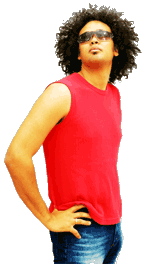What is an Oblique Drawing?
An oblique drawing is a simple form of three-dimensional (3D) drawing that is often created for drafting or engineering. Such a drawing usually consists of an object in which the front of the object is drawn flat, with the height and width of the object drawn the proper lengths. The object is then given depth through sides drawn at an angle to create the sense of the object being three-dimensional; this is often at a 45° angle and the sides can be foreshortened. An oblique drawing will typically be one of three types: normal, cabinet, or cavalier.
To create an oblique drawing, an engineer or designer will usually begin with a “three-view drawing.” This consists of a single object rendered in three distinct views: from the front, the side, and the top. The front drawing is usually created first to establish the height and width of the object. The vertical lines of the front view can then be extended upward on the paper, the depth of the object is added to these and this creates the top view. Horizontal lines from the front view can then be extended to the side of the front view, the proper depth is used once again, and the side view is thereby created.

With a three-view drawing, a designer or engineer can then easily create an oblique drawing. This is done by using the height and width from the front view, and keeping them the same size. The depth of the top and side views can then be used to add depth to the oblique drawing and create the sense of 3D in the image. While any angle could potentially be chosen to create the depth lines, a 45° angle is often chosen for the easily visible nature of lines at that angle.
The length of the lines used to add depth to the object determines the type of oblique drawing being created. Normal oblique drawings use depth lines that are only three-fourths the length of the depth established by the three-view drawing. Cabinet drawings use lines only half the length of the original depth lines to create the oblique object.
In either of these types, the object will appear foreshortened and seem closer to how it might actually appear in 3D space. A cavalier oblique drawing, on the other hand, uses depth lines that are the same length as the top and side views in the three-view drawing. Though this retains the sizes provided in the three-view image, the perspective created by this type of oblique is much more exaggerated.
AS FEATURED ON:
AS FEATURED ON:











Discussion Comments
I have an engineering friend who plans projects with oblique drawings. He works for a ceiling fan manufacturing company, and they are always trying to come up with new designs and new modes of operation.
I have seen his drawings on paper and onscreen. He uses a ruler and a pencil for the paper drawings, but he uses a computer program for the final version, because it will need to be mathematically exact in order to be executed.
It’s pretty cool to have a computer program that can let you design objects three-dimensionally. I have only ever worked with two-dimensional design software, so this is new to me, even though it’s been around a long time.
@kylee07drg - I vaguely recall doing oblique drawings in geometry class. I didn’t do so well in that class, but I did enjoy the drawing portion.
Now, my kid is doing a version of oblique drawing in second grade. The teacher is showing the kids how to draw extension behind and to the side of letters of the alphabet in order to create depth.
My daughter loves doing this, and I think that was the plan. The teacher inadvertently got her to practice her alphabet by making it fun to draw the shapes of the letters and make them pop.
In my shop class in high school, I had to learn to do oblique drawings. This was much harder than drawing cartoon animals, which is what I doodled in my notebook all day long.
I had never really thought of drawing anything three-dimensionally before, probably because I never knew how. I had been living in an artistically flat world, but my shop teacher expanded my drawing skills and my brain.
Of course, we were drawing objects for a purpose, not just for art’s sake. However, it opened up a whole new plane in my mind, and I began drawing everything with multiple dimensions after this.
Post your comments